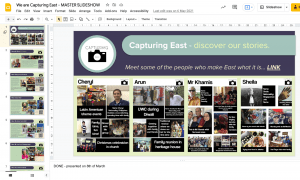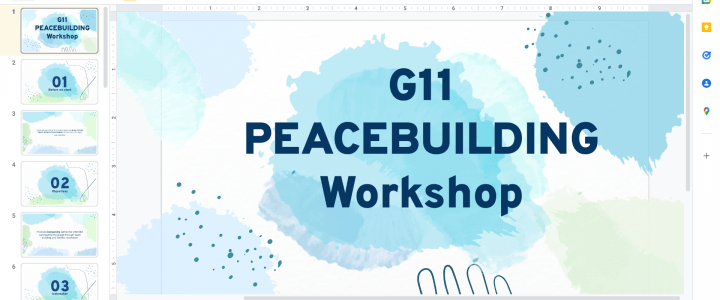Before
“Creating a kinder world through art” The Memory Project is dedicated to promoting intercultural awareness, friendship, and kindness between children around the world through the universal language of art. The Portrait Program is where high school students create portraits as special gifts for children facing substantial challenges. This is for all levels of ability, the activity will look at different portraiture methods to produce high-quality art portraits of and for children around the world who are part of the Memory Project. This will be a fun, creative and meaningful activity where I can work using artistic skills I already possess or learn new skills.
In this activity I hope to achieve learning outcome 1, identifying own strengths and develop areas for growth. In addition to this activity being a meaningful service to the members of our community I also want to use this opportunity to further my skills as an artist and optimise my abilities. There’s an added layer of pressure with the expectation of drawing someone you see everyday and I will be the focal point of your artwork. Facing the pressure of having the possibility of making the person displeased is usually frightening and would have previously drawn me away from doing portraiture. However I will use this activity as a method of dealing with my internal conflict and will learn how to accept challenges and grow with them.
I want to also achieve learning outcome 2, demonstrate undertaking challenges and developing new skills in the process. Like mentioned previously this activity will prove to be a journey of self growth, and that won’t come without a challenge. I want to be sure that from this I will be able to have a growth mind-set, telling myself that I can improve and will take to following steps to. While keeping in mind the message behind the activity and its impact on our community.
during:
My first task is to create a portrait of Yuzil, our school secretary and a member of staff. In the beginning of the activity I was one of the few grade 11s attending with grade 12 students present, I was also the only student who newly joined the activity since other members were already attending it. This was intimidating for myself in the beginning as I felt new to the group and thought I would have to work especially hard to build up my working pace in order to equally contribute to the project, as other members were already working on their developed work.
In order to face this challenge and insure that I can contribute to the project’s initiative I chose to use to use with a medium I was familiar with and could work quickly, I chose to do the portrait in water colours. Even though water-colours can be uncomfortable to work with as they take a long time to dry and can be hard to manage, I picked it as my medium since it will allow me to showcase my skillset but also build my confidence and work efficiency as an artist.
After:
After completing Yuzil’s portrait I got the chance of gifting it to her as she was leaving our school community as a parting gift, this made my participation and effort in the project very full-filling and grateful. Yuzil has been working in our school for a very long time, helping many students behind the scenes through participating in planning and organising various activities and events. Knowing her for over 5 years and being one of the students she helped I felt incredibly grateful for having the opportunity to showcase my gratitude for her work and effort.
In this activity I was able to achieve learning outcome 1, identifying own strengths and identify areas for development, through using my familiar medium of work through water-colours. I was able to identify my strengths in navigating the characteristics of my tools in order to create a good piece of work. However an area for development I identified is managing my time efficiently. Even though my work was done well it still took a long time to be completed, even if using water-colours required meticulous work and more effort, I should have worked in larger sections and later added the details when working through the artwork. I learnt that even though the quality of my work proved to be great, I need to find a way of working efficiently and neatly.
In this activity I was able to achieve learning outcome 2, demonstrating undertaking challenges and developing new skills in the process through my work. One of the challenges I undertook was overstepping my fear of drawing portraits. As someone who draws frequently I tend to place pressure on myself when doing a drawing for or of someone I know, and when I started the portrait of Yuzil I was especially cautious since not only was she someone I knew, but the medium and canvas size were also intimidating. Through slowly developing and building up the painting I became more comfortable with working with water-colours since I chose to cross-hatch shade instead of forcefully blend and started to trust the process and became more patient, I simultaneously undertook a personal challenge and developed new skills.
 (Yuzil’s final portrait)
(Yuzil’s final portrait)
 (photo from recorded performance)
(photo from recorded performance) (roles and responsibilities in collecting donations)
(roles and responsibilities in collecting donations) (one of the stencils I made)
(one of the stencils I made) (my first interview transcript)
(my first interview transcript)
 (mentor presentations)
(mentor presentations)

 (planning done for final presentation)
(planning done for final presentation)
 (planning and brain storming process)
(planning and brain storming process) (our group presentation)
(our group presentation)


